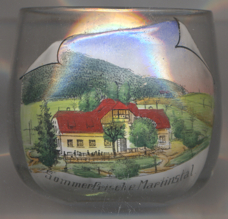

|
| ČESKÁ REPUBLIKA | CZECH REPUBLIC |
| Liberecký kraj | Liberec region |
| Okres: Česká Lípa |
Cvikov (German: Zwickau in Böhmen) is situated at an elevation of 357 m on the southern edge of the Lužické hory (Lusatian mountains) nature reserve between the České Švýcarsko (Bohemian Switzerland, see Edmundova soutěska and Pravcická brána) to the west and the Ještědský hřbet (Ještěd ridge) to the east. The municipality has a population of about 4,400 (2017) and is divided into the localities Cvikov I, Cvikov II with Martinovo Údolí (Martinstal), Drnovec (Kleingrün), Lindava (Lindenau), Naděje (Hoffnung) with Hamr (Hammer), Svitava (Zwitte), Trávník (Glasert) and Záhorín (Sohr).
The earliest known documents referring to this place date from 1346. In 1391, Cvikov obtained the privileges of a town. At first the town belonged to the estate of Milštejn (Mühlstein), later to that of Zákupy (Reichstadt). The privileges as a town were confirmed in 1745. In 1850 the town became the seat of a judicial district. In 1886 Cvikov was connected to the railway system and thus Cvikov by 1900 developed into an industrial town. Following the Munich Agreement, Zwickau from 1939 until 1945 was part of the district Deutsch Gabel (Jablonné v Podještědí) of the Reichsgau Sudetenland of the German Reich. After World War II the German-speaking population of Cvikov was expropriated and expelled. In the following decades, the formed industrial town gradually developed into being the centre of a recreation region.
Further glasses of this collection are souvenirs from Zwickau (which in Czech also is called Cvikov) in Saxony, Germany.

Glass no. 3480 [left] shows the
 Martinovo
Martinovo
[https://de.wikipedia.org/wiki/Cvikov;
http://www.luzicke-hory.cz/mista/index.php?pg=zmmaudd]
![[scale]](lineal.jpg)